The Braille in Focus event in November 2024 was organised by the Scottish Sensory Centre to celebrate the 200 years since braille was created by Louis Braille in France. Apart from learning about the history of braille, it was an opportunity to meet with other people supporting blind students and to try out some of the latest braille technology.
I attended with a severely sight impaired student from the University and I managed to get my co-writers of An Accessible Maths Journey, Natalie and Cordelia, to join in as they were conveniently based in Scotland already.
Two other serendipitous connections took place; firstly, Ros Walker of St Andrew’s also attended so we managed a catch up on our shared experience of being learning technologists who had gravitated to supporting disabled students. Secondly, the host of the event, Elizabeth McCann had just been in Singapore to deliver a workshop to my niece who works in a charity for blind young people! The world is indeed a very small place.
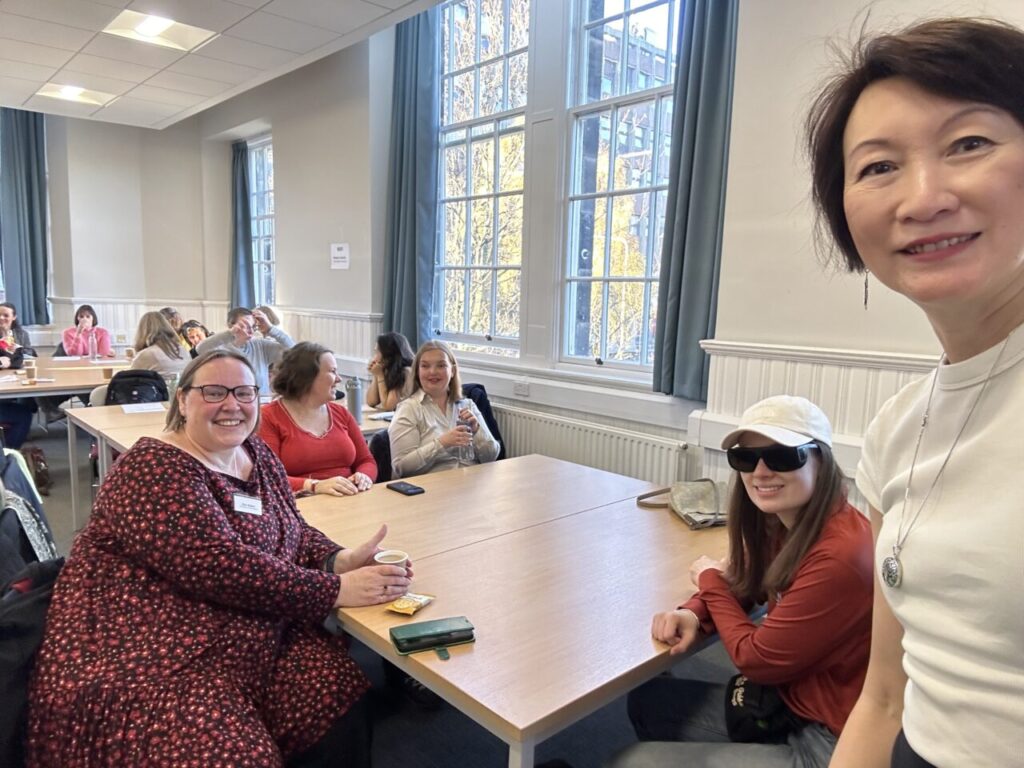
The hosts provided a printed agenda for the day and also provided these in braille. It was such a thoughtful and considerate thing to do.
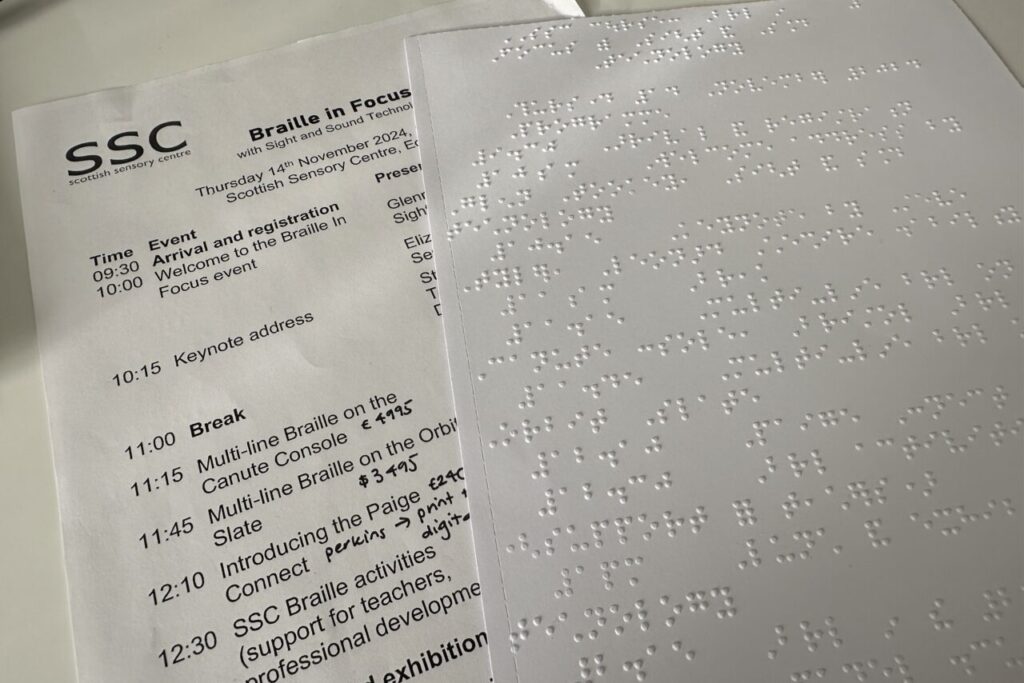
Steve Tyler, Director of Assistive Technology at Leonard Cheshire Disability gave the keynote address. He took us through the history of braille, from the bias against blind people, the politics and jostling that went on to have a standard braille adopted around the world and even the current fight to retain braille in education in the face of advancing technology. People wonder why braille is needed when it’s so easy to have things read out on a mobile device these days but if you’ve ever tried to study for an exam using audio alone, you’ll appreciate that the brain isn’t very good at single channel learning. Sighted people take for granted how easy it is to skim read or to look back at a previous point in the text; you can’t do that easily with audio so braille (especially printed braille) provides the closest equivalent experience.
Braille technology
After a break we were treated to presentations on the latest braille technology available to blind students.
- Ed Rogers from Bristol Braille Technology showed us the Canute Console which allows multi-line braille and a way to create tactile ‘pictures’ on the device.
- Stuart Lawler from Sight and Sound followed on to demonstrate the Orbit Slate, a portable multi-line refreshable braille device.
- Gregory Hargraves showed us the Paige Connect which replaces the base board of a Perkins brailler (essentially a braille typewriter for embossing braille on paper) allowing it to convert the typing into a digital format. Many people who have learned braille and have a Perkins brailler will likely find this device very useful! He also demonstrated the learning games on the Paige Braille website available to everyone for learning braille.
- Elizabeth McCann finished the presentation segment of the day detailing how the Scottish Sensory Centre (SSC) provides support and professional development for teachers of the visually impaired, highlighting the SSC resources available.
Over lunch we were able to explore the devices on show, especially the Canute Console that we hoped might help with displaying tactile diagrams. However, it didn’t work the way we thought it would due to the spacing of the lines essentially being fixed to the line height for braille display. We actually thought the pins would be more regularly spaced allowing any image to be converted into a tactile format. Instead, a legend is used to indicate what letters on the Canute display map to in a diagram. One advantage is the visual display that allows a sighted helper to help alongside where needed.
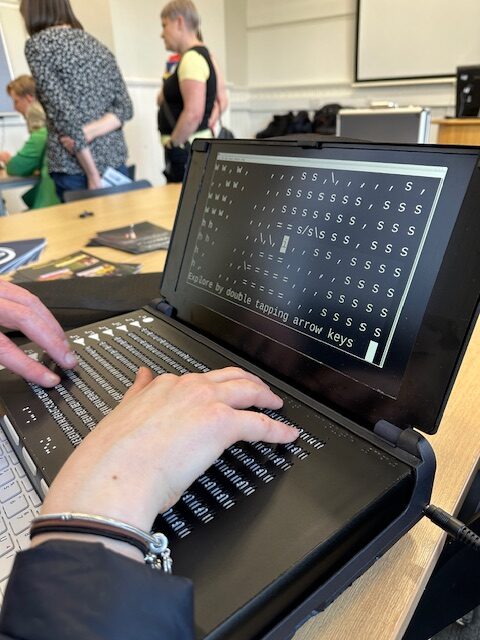
We also tried out the BrailleDoodle, aimed at children but also useful for quick drawing of shapes – like a Magnadoodle (for those old enough to remember these) except it creates a raised version to help with perceiving shapes drawn. My student also showed me her HableOne, a bluetooth keyboard that makes it easier to type in braille directly to her iphone for quicker notetaking.
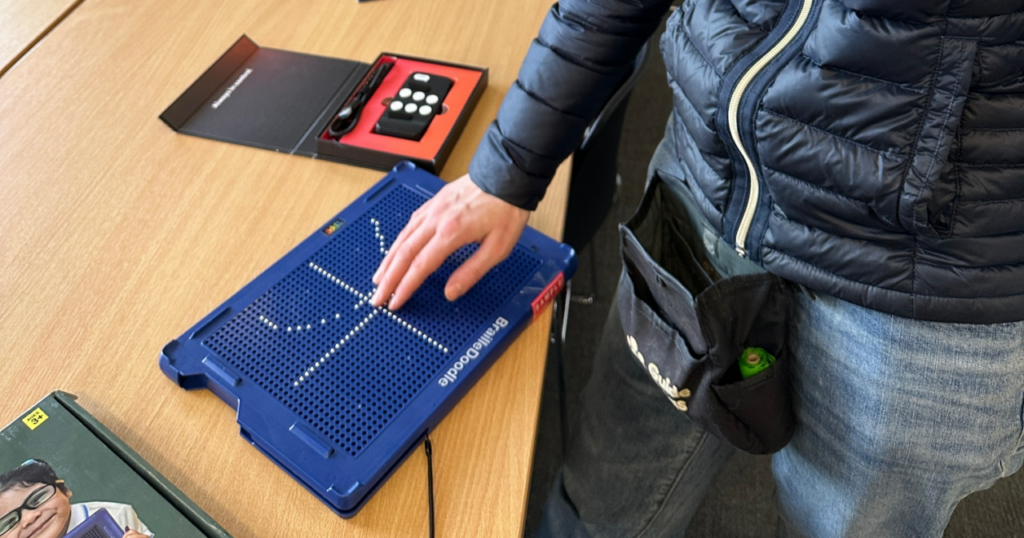
My key takeaways from attending the event were:
- Equipment for the sight impaired is very expensive and often, students have additional costs to bear.
- Our sight impaired students don’t have easy access to printed material in the same way as our sighted students who can freely print things out across campus if they wish. It would be great to have a braille embosser like the SpotDot on campus.
- There is a myth that learning braille is old-fashioned and the need is dying out with new technologies. In fact, the way we learn has not changed and the human brain learns best when engaging with more than one sense. A few students have now mentioned to me how they still learn best if they ‘write out’ with their fingers or with a pen on paper to get things into their brain, especially true for people who lost their sight as children or young adults. Learning braille allows them to scan text or diagrams with their fingers which is a good way to use two senses for learning, eg audio and touch.
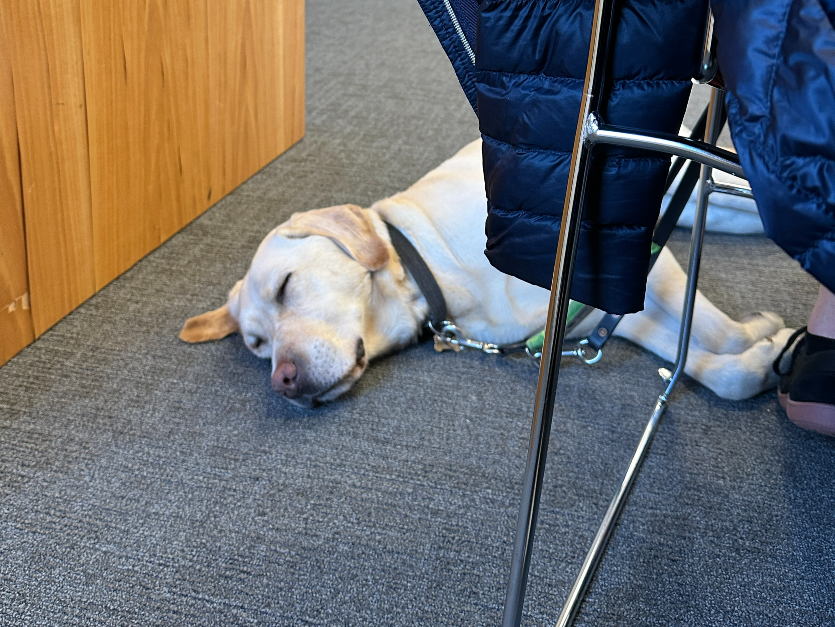
If reading this blog post has made you interested in learning braille as a sighted person, why not try the UEBonline tutorials where you can use your current keyboard to learn to type braille.
ps: Did you know 4th January is World Braille Day?
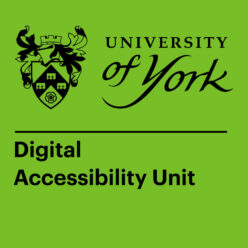

One thought on “Reflections on the Braille in Focus event, Nov 2024, Edinburgh”